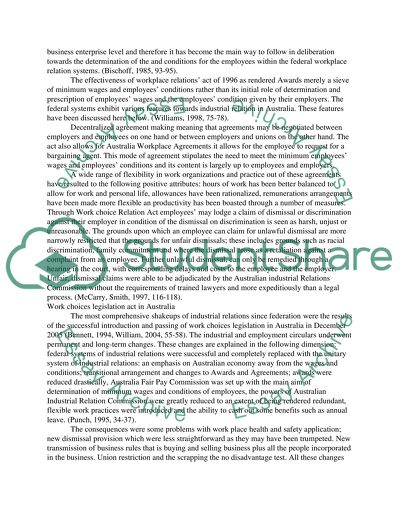Cite this document
(Industrial Relations in Australia Term Paper Example | Topics and Well Written Essays - 1500 words, n.d.)
Industrial Relations in Australia Term Paper Example | Topics and Well Written Essays - 1500 words. Retrieved from https://studentshare.org/law/1516014-industrial-relations-in-australia-college-essay
Industrial Relations in Australia Term Paper Example | Topics and Well Written Essays - 1500 words. Retrieved from https://studentshare.org/law/1516014-industrial-relations-in-australia-college-essay
(Industrial Relations in Australia Term Paper Example | Topics and Well Written Essays - 1500 Words)
Industrial Relations in Australia Term Paper Example | Topics and Well Written Essays - 1500 Words. https://studentshare.org/law/1516014-industrial-relations-in-australia-college-essay.
Industrial Relations in Australia Term Paper Example | Topics and Well Written Essays - 1500 Words. https://studentshare.org/law/1516014-industrial-relations-in-australia-college-essay.
“Industrial Relations in Australia Term Paper Example | Topics and Well Written Essays - 1500 Words”, n.d. https://studentshare.org/law/1516014-industrial-relations-in-australia-college-essay.


